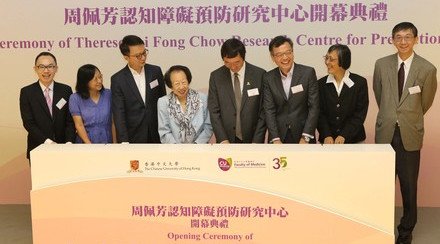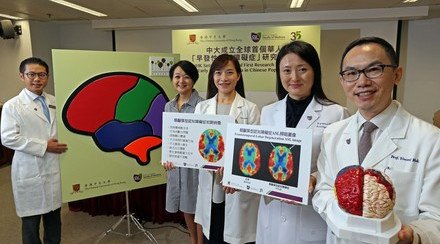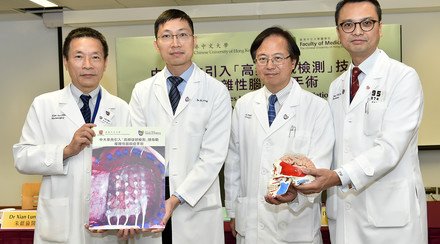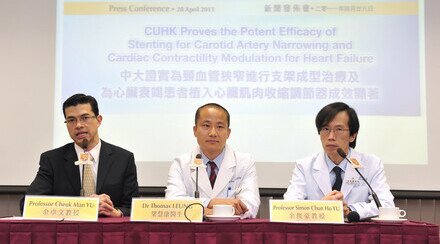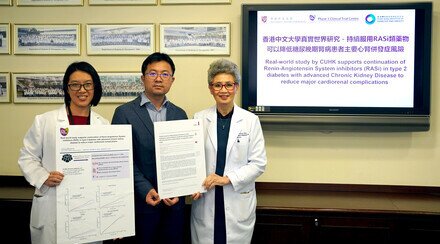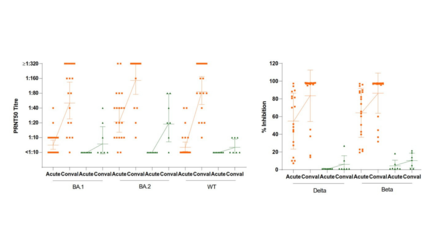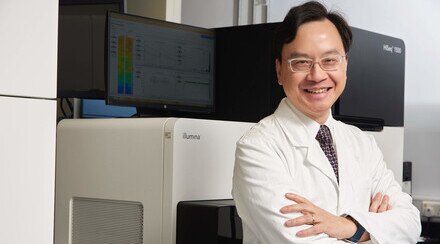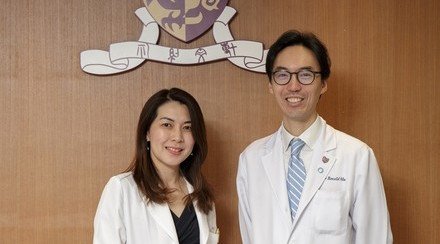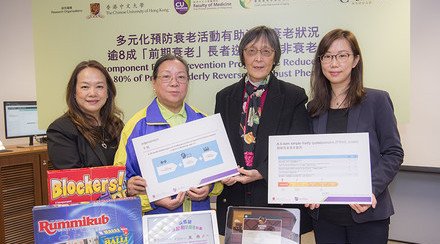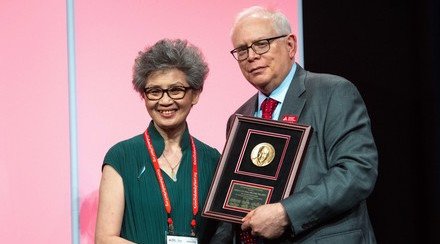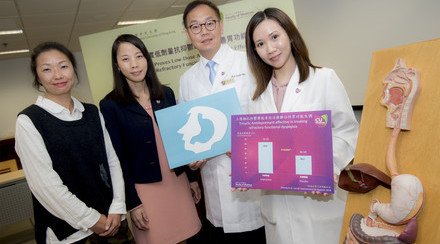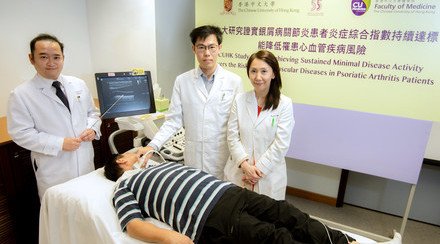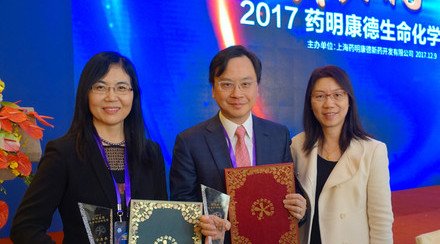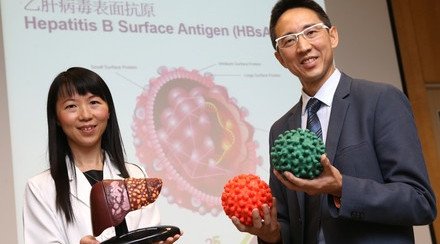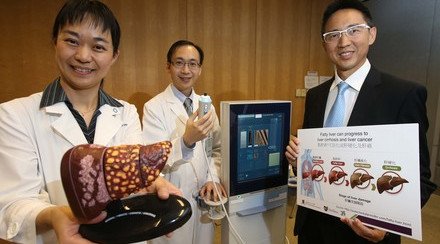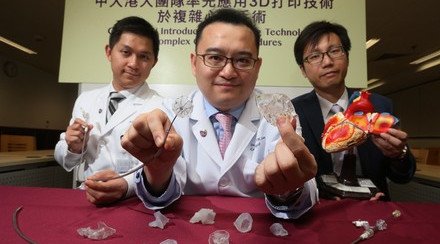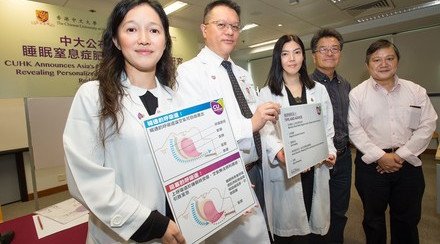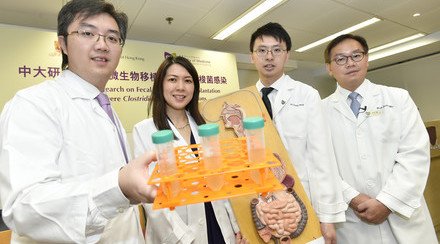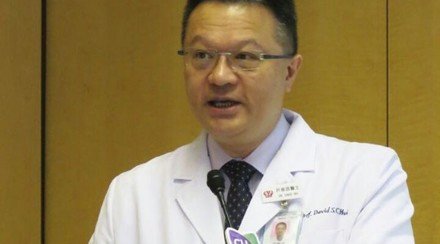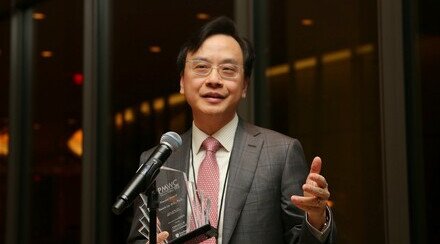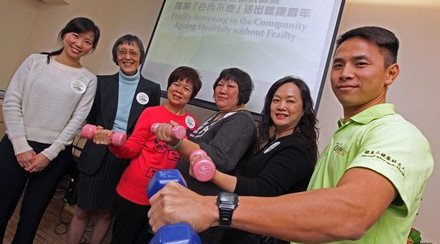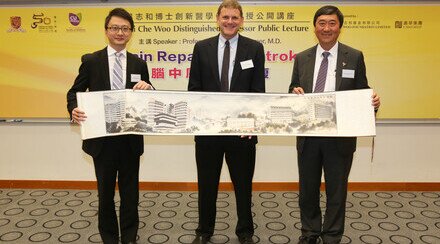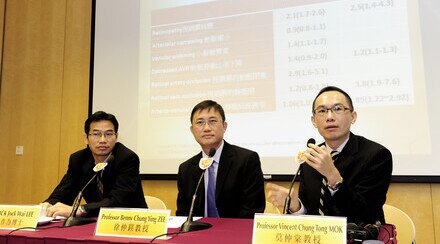CUHK Professor Receives World Honour For Stroke Services Pioneering an Innovative 3-in-1 Multi-Target Therapy to Repair Damaged Brain After Stroke and Enhance Functional Recovery
According to the World Stroke Organization (WSO), it is estimated that 1 in 6 people will have stoke in their lifetime. The Faculty of Medicine of The Chinese University of Hong Kong (CUHK) has been devoted to unlocking the cause of high stroke mortality in Chinese, and exploring innovative therapeutic methods to boost stroke recovery. Prof. Lawrence Ka Sing WONG, Professor in Neurology of The Faculty of Medicine and an internationally renowned expert in cerebrovascular diseases received the ‘WSO President’s Award for Services to Stroke’ last month at the biennial World Stroke Congress, for the contribution of him and his team to stroke research.

Prof. Lawrence Ka Sing WONG (front row centre), Mok Hing Yiu Professor of Medicine and Head of Division of Neurology, Department of Medicine and Therapeutics, CUHK receives the ‘World Stroke Organization President’s Award for Services to Stroke’ this year for the contribution of him and his team in stroke research.
WSO’s recogniton of past contributions towards stroke research among Asians at CUHK
Stroke is much more common in Chinese than in the West but the underlying mechanisms were not known. In 1998, Prof. Lawrence Ka Sing WONG, Mok Hing Yiu Professor of Medicine and Head of Division of Neurology, Department of Medicine and Therapeutics, CUHK, first discovered that narrowing of the blood vessels in the brain (intracranial atherosclerosis) was the most common cause of stroke in the Chinese population. Two years later, the team at CUHK further found that intracranial atherosclerosis patients were at much higher risk of recurrent stroke. In 2002, his team delineated the mechanisms of stroke associated with intracranial atherosclerosis as tiny blood clots (microembolism) flowing in the artery. In 2010, an international multi-center research led by CUHK established that the use of double antiplatelet drugs is much more effective in reducing the number of circulating tiny blood clots in patients with mild stroke. The above mentioned discoveries have changed the textbook, first with intracranial atherosclerosis being the most common cause of stroke in Asian and second, the use of double antiplatelet drugs is now standard in clinical practice.
Current and future research directions: help the disabled stroke patients to recover
Despite emergency treatment, about 15-30% of stroke patients become disabled on discharge from hospital. Upper limb weakness is one of the major limiting factors for independent living for stroke survivors. Current treatment consists of mainly physiotherapy while the main underlying cause of disability, including reduced blood flow to the brain and lack of stimulated activities of the surviving brain cells, are not targeted for treatment. Professor WONG’s team has developed an innovative approach which targets all of the above factors, namely ‘Pulse-Magnetic-Stimulation (PMS)’. PMS is the world’s first attempt to combine external counterpulsation, intermittent theta burst magnetic stimulation (iTBS) and physiotherapy.

Prof. Lawrence Ka Sing WONG and his team invent ‘Pulse-Magnetic-Stimulation (PMS)’, the world’s first 3-in-1 therapy combining physiotherapy, external counterpulsation and ‘Intermittent theta burst magnetic stimulation’ to repair damaged brain after stroke and enhance function recovery.
Over the past ten years, the Division of Neurology of the Faculty of Medicine, CUHK carefully analysed the mechanisms and effects of external counterpulsation, a treatment aiming at augmenting blood flow to the brain. In 2012, the CUHK team proved that external counterpulsation induces diastolic augmentation of blood flow by 9% after stroke. Another recent development for brain recovery is the use of repetitive transcranial magnetic stimulation (rTMS). rTMS increases brain cell excitability and facilitates recovery of functional disability. iTBS is a new type of rTMS with theoretically better effect within a shorter time of stimulation.
‘We plan to study the effect of combining external counterpulsation and iTBS, in addition to standard physiotherapy, on the recovery of motor function of the disabled upper limb after stroke. We expect there should be synergistic effects by targeting two different mechanisms at the same time,’ said Professor Wong.
He added, ‘The most common cause of stroke is caused by blockage of an artery to the brain and as a result brain cells die. The aim of our new PMS therapy is to implement an all-front approach, combining blood flow augmentation to the brain, stimulation of the surviving brain cells and physical therapy.’
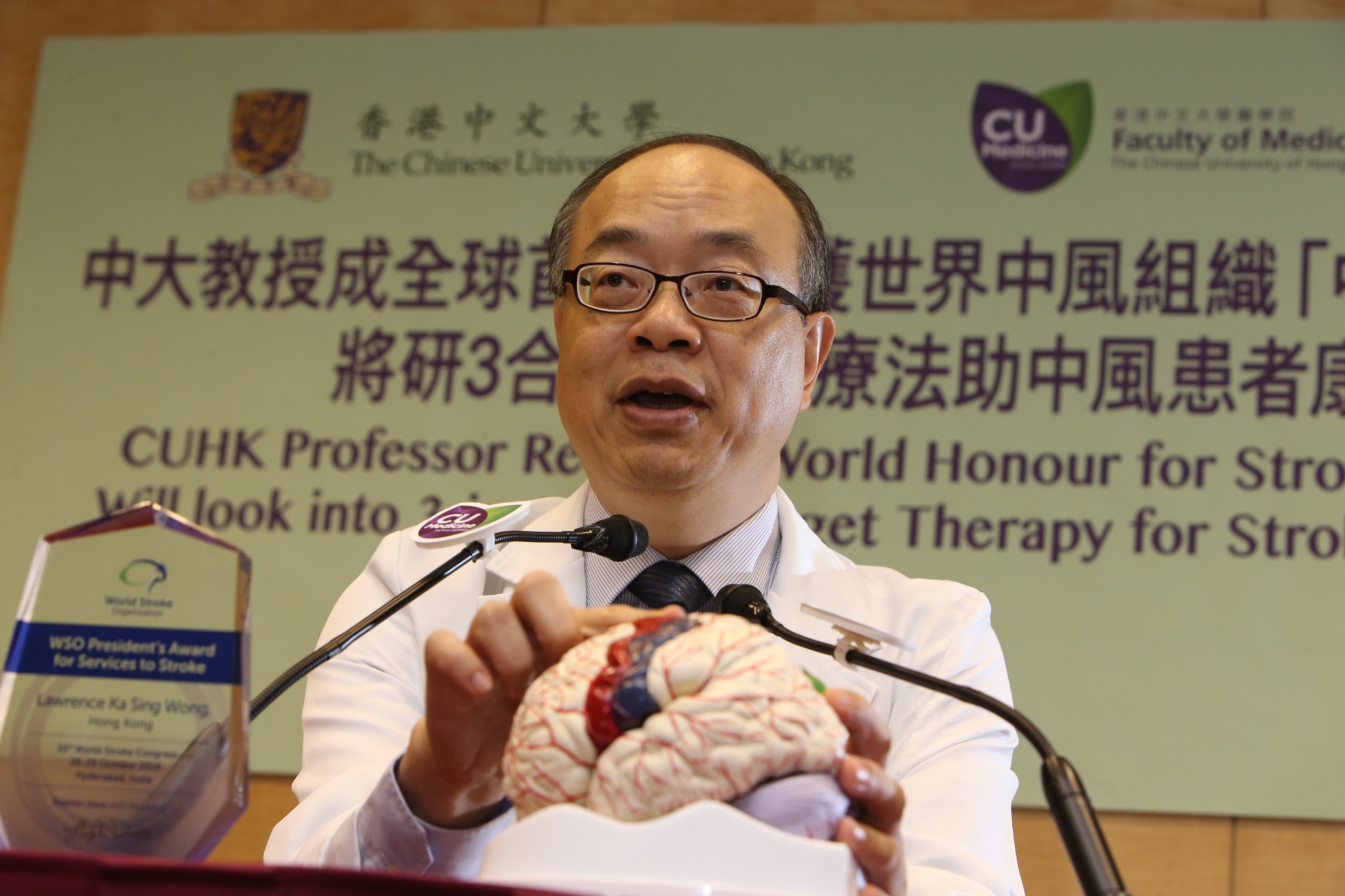
Prof. Lawrence Ka Sing WONG explains ‘PMS’ can help on the recovery of motor function of the disabled upper limb after stroke by blood flow augmentation to the brain and stimulation of surviving brain cells.
First Chinese to receive World Honour for stroke services for contribution in promoting stroke prevention and treatment in Asian
Prof. Lawrence Ka Sing WONG is the first Chinese receiving the ‘WSO President’s Award for Services to Stroke’ from the World Stroke Organization. This Award recognizes significant lifetime contributions to stroke services. Past recipients included an investigator developing clotbusting drug to treat stroke.
Professor WONG’s major research interests lie in the epidemiology, neuroimaging and treatment of stroke. His pioneering work has won many international recognitions and awards, including the Bruce S. Schoenberg International Award in Neuroepidemiology from the American Academy of Neurology in 2001 and a gold medal for the Chapter of Neurology Lecture from the Singapore College of Physicians in 2005. He was named Croucher Senior Medical Research Fellow in 2011.
He is the Secretary of the World Stroke Organization, Geneva, and also an associate editor of the journal STROKE and the journal Neurology Asia. He is a visiting professor of Fudan University, Sichuan University, Zhongshan University and Peking Union Medical College. He has authored more than 400 original research papers in indexed journals.
















